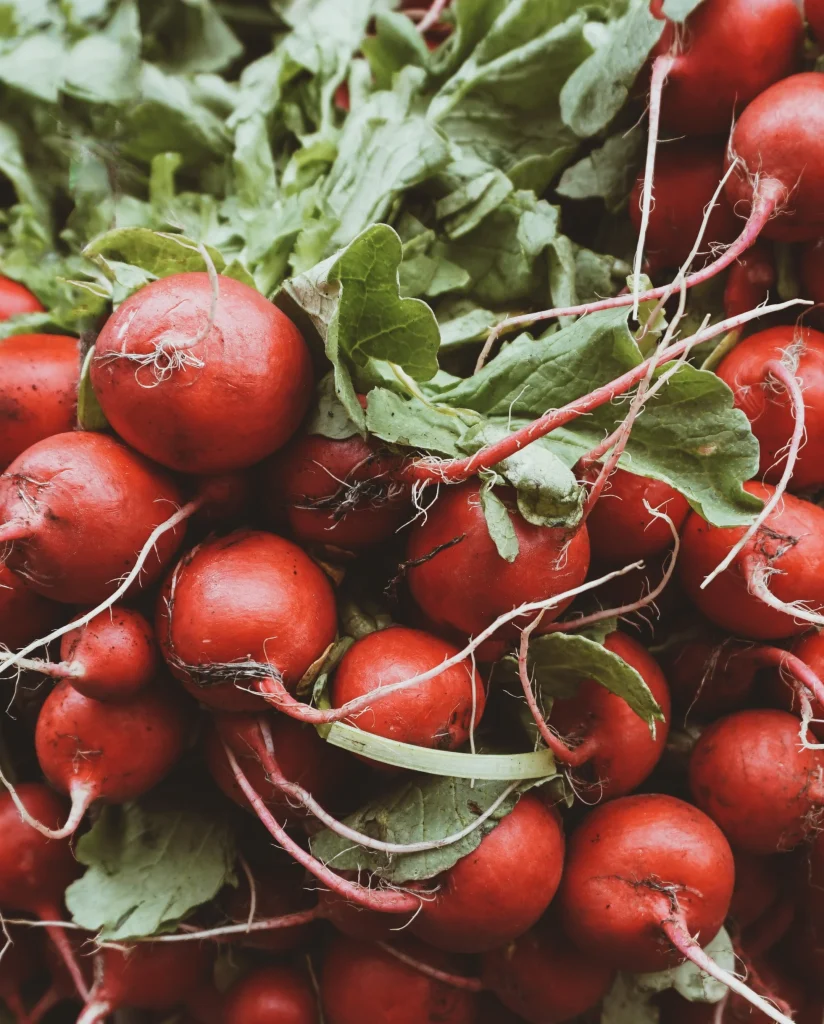Fast-Growing Veggies to Grow at Home Quick Harvest Tips

Unleashing the Potential of Your Home Garden
Are you poised to elevate your home gardening experience? Cultivating your own vegetables can be a fulfilling endeavor, particularly when you choose fast-growing varieties. The journey from seed to table can be both quick and gratifying, offering you the pleasure of fresh produce while simultaneously enhancing your culinary repertoire and trimming your grocery expenses.
Why Choose Fast-Growing Vegetables?
Fast-growing vegetables not only provide you with a quicker return on your investment of time and resources, but they also allow you to enjoy seasonal changes in your garden. As seasons shift, different crops can be planted and harvested, enabling a continuous supply of fresh ingredients. This aspect fosters a sense of connection to nature and the cycles of food production that can be incredibly rewarding for any home gardener.
Quick Harvest Veggies to Grow at Home
Here, we’ll take a closer look at some quick-harvest veggies that can easily fit into your gardening plans:
- Radishes: These crunchy vegetables are a staple in many gardens, sprouting in as little as three weeks. Their rapid growth rate makes them perfect for succession planting throughout the season. Plus, they add a zesty flavor to salads.
- Lettuce: With many varieties available, you can enjoy tender leaves within just four to six weeks. Opting for loose-leaf or baby greens allows for multiple harvests from the same plant, maximizing yield.
- Green beans: These versatile staples can be harvested within 50 to 60 days after planting, and they come in both bush and pole varieties, offering flexibility in space usage. They also contribute nitrogen back to the soil, improving its health.
- Spinach: Quick to grow and packed with nutrients, spinach thrives in cooler temperatures. With its rich iron content, it’s a fantastic addition to any health-conscious diet.
- Kale: A superfood in its own right, kale grows well in cooler weather and can be harvested multiple times if you pick the outer leaves. Its hearty nature and nutritional value make it a favorite among health enthusiasts.
Maximizing Your Garden’s Potential
To achieve a bountiful harvest in record time, understanding the fundamentals of planting and care is critical. Factors such as soil quality, sunlight exposure, and watering practices play a significant role in the health and yield of your garden. Employ techniques like raised beds to enhance drainage and soil warmth, or consider companion planting, where certain crops are grown together for mutual benefits.

With the right knowledge and approach, you can transform your home garden into a thriving production space that rewards you with fresh, homegrown produce within a matter of weeks. As you immerse yourself in the world of gardening, you will discover not only the secrets to growing fast veggies but also a deeper appreciation for the food you consume. Ready to roll up your sleeves and dig in? The secrets to your flourishing garden await!
CHECK OUT: Click here to explore more
Choosing the Right Varieties for Quick Success
When embarking on your fast-growing vegetable journey, selecting the right varieties is crucial. Different vegetables have distinct growing conditions and requirements that influence their growth rates. As you gear up to cultivate your home garden, consider the following factors that can help you achieve rapid results:
- Growing Season: The timing of your planting matters significantly. Fast-growing vegetables are generally categorized into cool-season and warm-season crops. Understanding your local climate and the optimal planting times for each type will maximize your chances of a successful harvest. For instance, crops like spinach and lettuce thrive in cooler temperatures, while tomatoes and peppers prefer the warm embrace of summer.
- Soil Preparation: Healthy soil is the foundation of robust plant growth. Before planting, enrich your garden bed with organic matter, such as compost or well-rotted manure. This not only improves soil fertility but also ensures your plants receive the essential nutrients they need to grow quickly and efficiently.
- Seed Quality: Invest in high-quality seeds from reputable suppliers. Organic and heirloom seeds may offer better germination rates and enhanced flavors, leading to quicker and tastier harvests.
- Plant Spacing: Giving your plants adequate space is vital for their growth. Overcrowding can lead to competition for nutrients, sunlight, and water, ultimately slowing down growth. Consult planting guides for recommended spacing between seeds and rows to prevent this issue.
- Watering Techniques: Consistent watering is fundamental for fast-growing vegetables. Regularly monitor the moisture level of the soil, and ensure your plants receive adequate water, especially during dry spells. Drip irrigation or soaker hoses can provide efficient moisture delivery while minimizing water loss.
By understanding these factors and implementing them into your gardening strategy, you can set the stage for a productive and satisfying vegetable garden. Consider starting with companion planting, a method where you intersperse different crops to boost growth and minimize pest issues. For example, planting basil alongside tomatoes can enhance their flavor and deter pests.
Additionally, you might want to explore vertical gardening techniques for vegetables like green beans and cucumbers. Creating vertical spaces can help maximize your growing area while also promoting healthy air circulation among plants, which is essential for preventing disease.
Tips for Early Harvests
To assist you in garnering those quick rewards, keep these quick harvest tips in mind:
- Succession Planting: Plant short-maturing crops in intervals every few weeks to ensure continuous harvesting throughout the growing season.
- Fertilization: Apply a balanced, fast-release fertilizer shortly after germination to give your plants the nutrient boost they need to accelerate growth.
- Regular Monitoring: Keep a keen eye on your garden. Look for pests or diseases that could stunt growth—address these issues promptly for the best possible results.
With the right approaches, your garden will not only flourish with fast-growing veggies but also provide an enriching experience that enhances your connection to nature. Get ready to transform your gardening skills, and before you know it, you’ll be harvesting fresh produce in no time!
When considering the best fast-growing veggies to cultivate at home, it’s essential to explore varieties that not only thrive in shorter growing cycles but also deliver nutritious yields. Here’s a look at some popular options that will help you maximize your gardening success.
| Category of Veggies | Key Features |
|---|---|
| Lettuce | Grows quickly, can be harvested in 30 days, and allows for multiple cuttings. |
| Radishes | Matures in as little as 25 days; crisp and spicy flavor that enhances salads. |
| Spinach | Rich in iron, it grows quickly, particularly in cooler weather, ready to eat in about 30-45 days. |
| Green Beans | Fast to germinate, producing harvest-ready pods in about 50 days, great for container gardening. |
| Zucchini | Rapid growth and prolific harvest in about 45 days, ideal for diverse culinary uses. |
Incorporating these quick-harvest veggies into your home garden can significantly enhance your home cooking experiences while providing a sense of satisfaction from growing your own produce. For optimal yields, consider intercropping these varieties to maximize space and light exposure.
By nurturing these fast-growing veggies, you not only support a sustainable lifestyle but also enjoy the health benefits of home-grown food. Experiment with different growing techniques and see how much you can achieve!
CHECK OUT: Click here to explore more
Key Fast-Growing Vegetable Choices
Now that you’re armed with strategies for planting and nurturing your fast-growing veggie garden, it’s time to delve into specific varieties that will reward you with quick, delicious yields. Below are some vegetable options that are particularly well-suited for home gardens and known for their swift harvest cycles:
- Radishes: One of the fastest-growing vegetables, radishes can be harvested in as little as three to four weeks after planting. Varieties such as ‘Cherry Belle’ or ‘French Breakfast’ are popular choices and can add a peppery crunch to salads and dishes.
- Leafy Greens: Spinach and arugula are excellent options for a rapid harvest. Spinach typically matures in about 30 to 45 days, while arugula can be ready in just 20 to 30 days. These can be harvested as baby greens or once they reach full size, making them versatile in the kitchen.
- Green Onions: Also referred to as scallions, green onions can be harvested just a few weeks after planting. They do particularly well in small spaces and can be regrown multiple times from kitchen scraps. Simply place the roots in water, and watch them flourish!
- Bush Beans: Fast-growing bush bean varieties, such as ‘Blue Lake’ or ‘Provider’, can yield a harvest within 50 to 60 days. They are not only productive but also nitrogen-fixing, benefiting the overall soil health of your garden.
- Baby Carrots: If you’re eager for crunchy vegetables, opt for baby carrot varieties like ‘Little Finger’ which can be harvested in about 50 to 60 days. Plant them in loose soil to facilitate their growth, and enjoy the sweet flavor of freshly pulled carrots right from your garden.
When selecting vegetables, keep your palette in mind and choose those that you or your family enjoy eating. The joy of a home garden lies not only in the gardening process but also in the celebration of the harvest on your dinner table.
Innovative Growing Techniques for Faster Results
To further enhance your success with fast-growing veggies, consider implementing innovative techniques that can significantly shorten your waiting time between planting and harvesting:
- Container Gardening: Utilizing pots and containers offers flexibility in location and often accelerates growth. Containers warm up faster in spring, creating an ideal environment for quick sprouting. Choose an appropriate size for each veggie type to ensure they have room to grow.
- Row Covers: Protecting your seedlings with lightweight row covers can enhance heat retention and block pests, leading to quicker growth. These fabrics also allow sunlight and moisture to penetrate, creating a micro-climate that promotes healthy plant development.
- Hydroponics and Aquaponics: For curious gardeners looking to experiment, hydroponic systems can cultivate veggies without soil, leading to substantial growth speed owing to direct nutrient delivery. Aquaponics, which combines fish farming with plant growing, creates a self-sustaining system that yields both fish and plants efficiently.
- Companion Planting: This age-old method not only boosts growth rates but also naturally deters pests. For instance, pairing carrots with onions can help ward off pests while optimizing the space they occupy.
Experimenting with these techniques can yield astonishingly fruitful results and encourage you to think creatively about your garden setup. Whether in a backyard or on a balcony, the right planning and innovative approaches can transform your vegetable garden into a wonderland of fresh produce.
SEE ALSO: Click here to read another article
Conclusion: Embrace the Rewards of Fast-Growing Veggies
In the journey of cultivating your very own home garden, fast-growing veggies present an enticing opportunity to enjoy quick and bountiful harvests. Emphasizing varieties such as radishes, leafy greens, and green onions not only provides you with nutritious options for your meals but also enhances your gardening experience by delivering rapid results. The anticipation of plucking fresh produce just weeks after sowing can transform your perspective on home gardening, making it a rewarding endeavor.
Moreover, by incorporating innovative techniques like container gardening, row covers, and companion planting, you can optimize growth conditions and accelerate your yields. Experimenting with these methods encourages creativity and problem-solving, inviting a sense of curiosity into your gardening routine. Not only do these practices make your garden visually appealing, but they also enhance its productivity while providing an avenue for continuous learning.
As you embark on this flavorful adventure, remember to choose vegetables that resonate with your family’s taste preferences. The satisfaction derived from sowing, cultivating, and ultimately enjoying your homegrown veggies is unparalleled. So roll up your sleeves, dig your hands into the soil, and nurture your garden with care. Before long, you will savor the rewards of your effort, bringing color, taste, and nutrition straight to your table.


